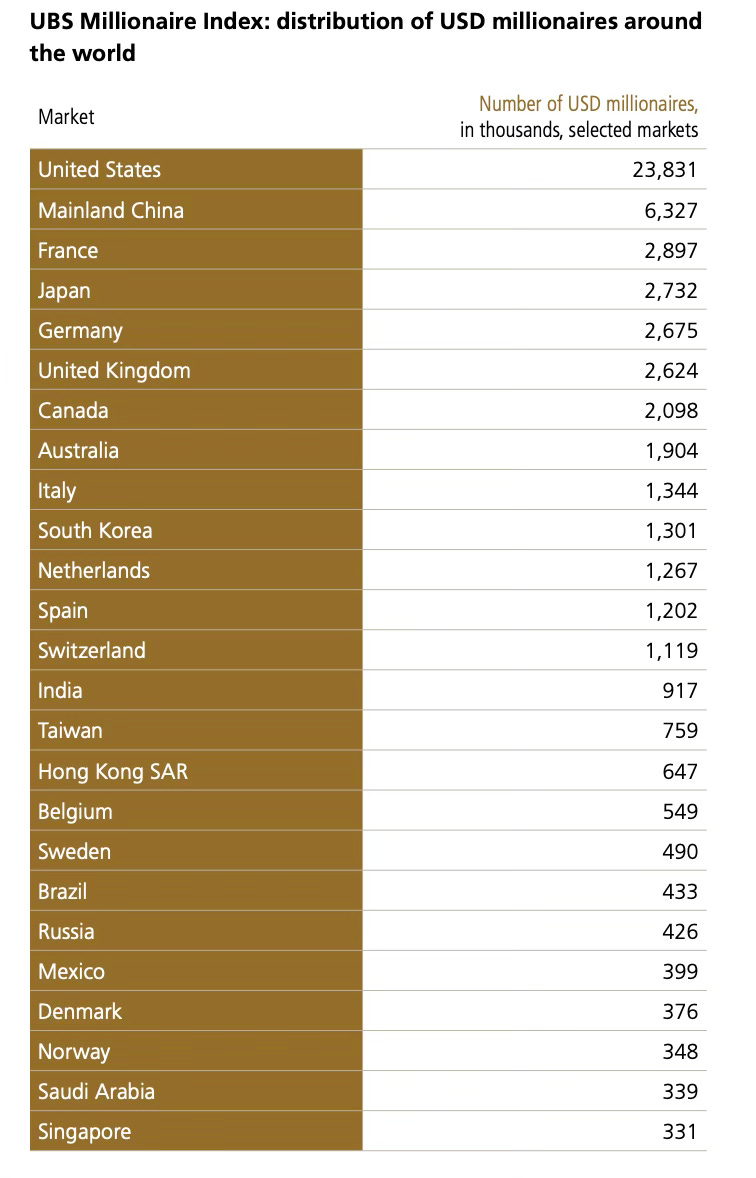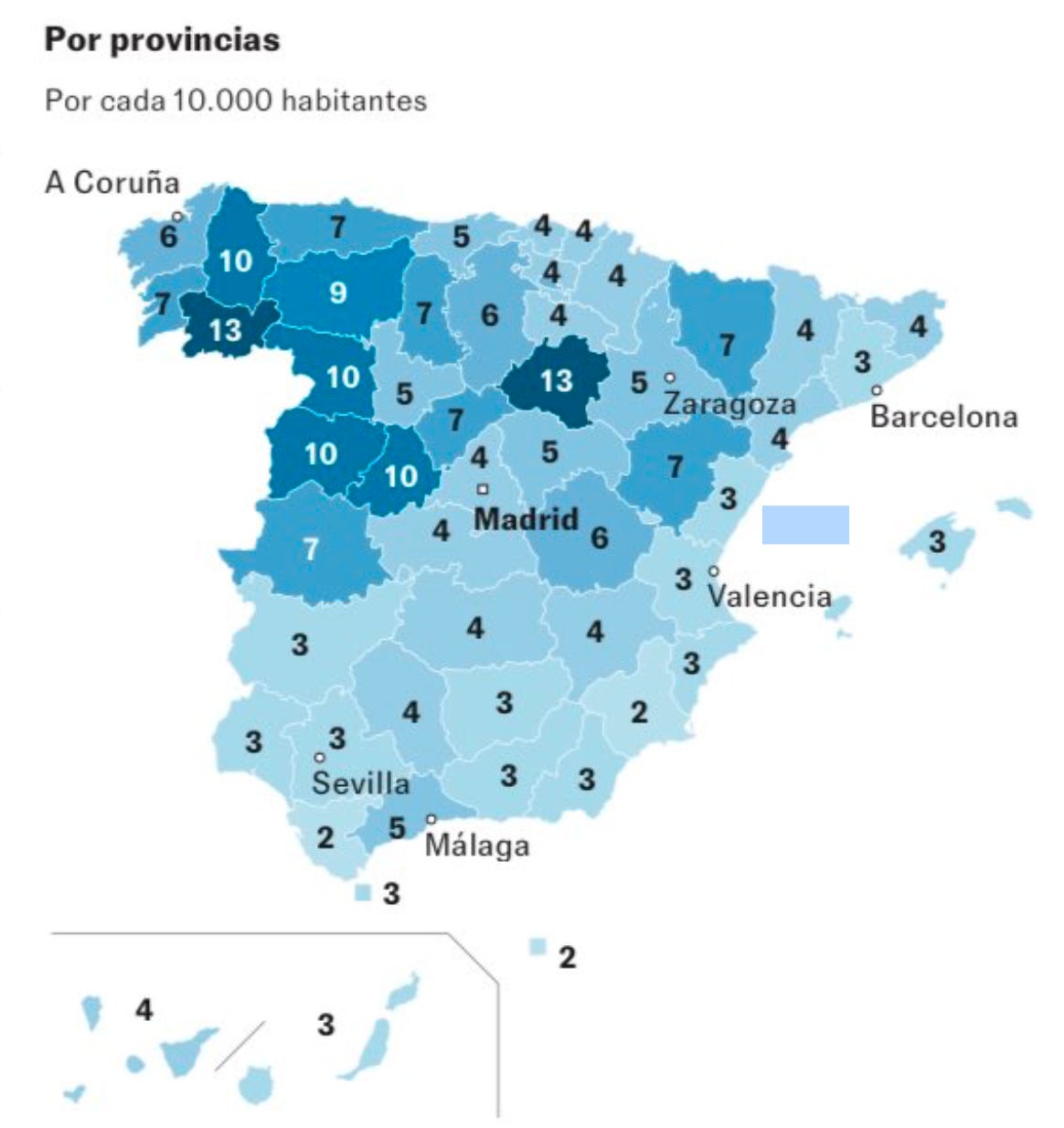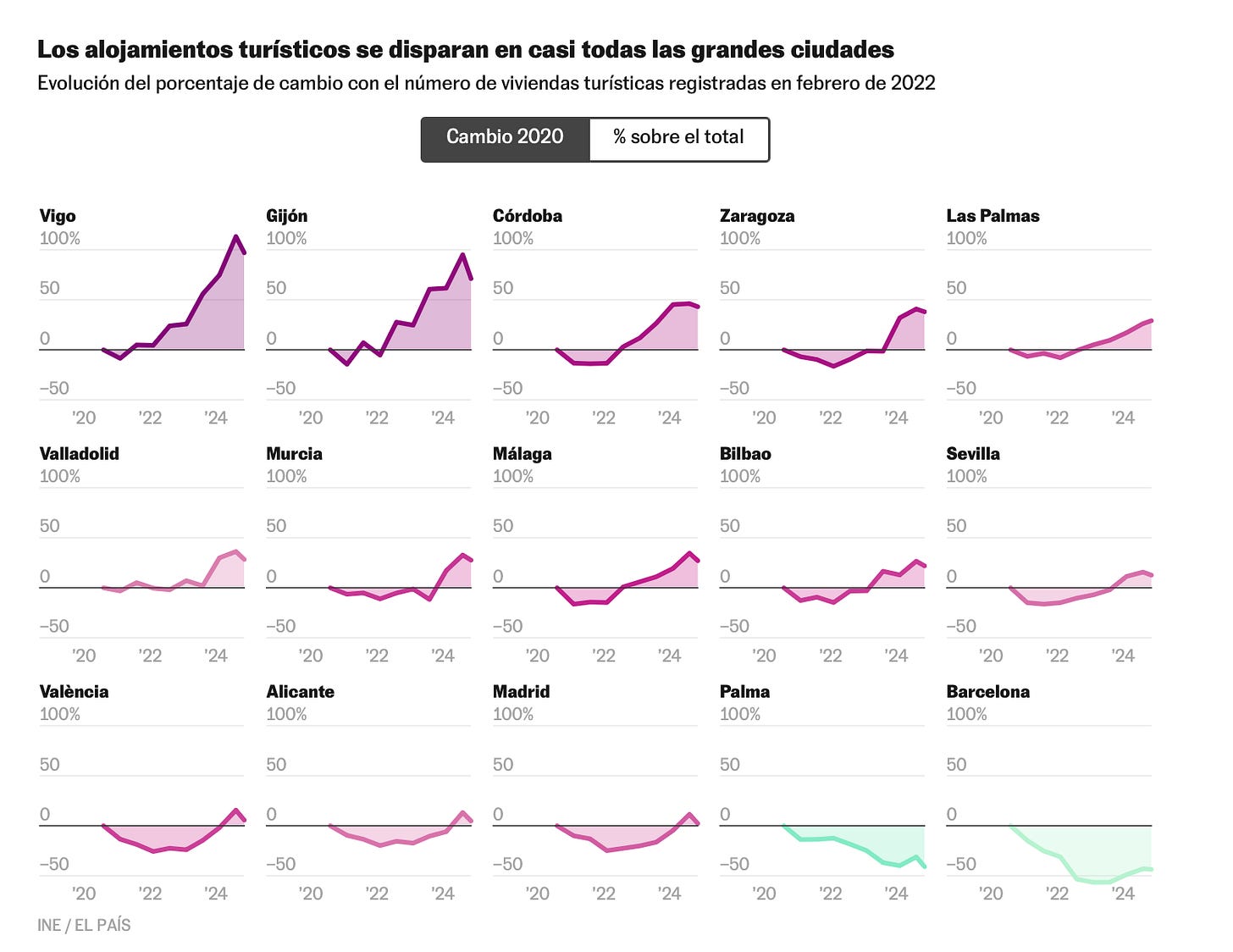Spainfographics #1
Millionaire Spain, heatwaves, baby slumps, the north v south centenarian divide, Andalusia on top, cities v tourist apartments, and more.

Welcome to the first edition of La Comunidad’s Spainfographics - frequent servings of interesting, relevant, quirky infographics that help explain where Spain is today, and where it’s heading.
I hope you find these informative and the floor is open (in the comments section) to give your two cents.
What surprised you? What trends do you think will soon change? Have your say below.
So let’s get into it!
Millionaire Spain
The headline: As per the UBS Global Wealth Report 2025, there are 1.2 million millionaires in Spain


Baby slump
The headline: Just 9% of the women born in 1960 in Spain went on to not have any children.
That number jumped to 25% among women born in 1979.

Heatwaves: landing earlier, lingering longer
The headline: During the period 1975-2000 in Spain, there were only two heatwaves in the month of June. During the 25 years since, there have been ten.

Winter sun sells
The headline: The most popular regions in the EU for short-term rental accommodation booked via online platforms (Airbnb, Booking or Expedia) in the final quarter of 2024 were Andalusia (8.7 million nights) and the Canary Islands (7.6 million) in Spain and Île-de-France in France (7.2 million).

Unemployment hits a 16-year low
The headline: There are currently 2.4 million unemployed people in Spain - the fewest number in the month of June since 2008 (2.39 million).
What makes the current unemployment figure even more impressive by Spain’s standards is that the population has grown by around 3 million since 2008.
Spain still needs to create more productive jobs.

Centenarian Spain
The headline: At the turn of the century, there were 1,998 centenarians in Spain. By 2024 that number had increased to 15,911.


Seeing the clear difference in longevity between the northwest and south of Spain reminded me of what Pablo García Vivanco said in our recent interview:
“The Atlantic Ocean is full of photosynthetic microorganisms, which feed into a nutrient-rich trophic chain. Our cold, deep waters mean that blue fish here contain more omega-3 polyunsaturated fatty acids. As a carbohydrate source, the north also favours potatoes - often boiled - which are lower in calories and higher in fibre, potassium, and water-soluble vitamins than pasta or rice, which are more common in the south.
The south may produce more olive oil, but here in Galicia we consume more of it. We also grow unique greens like turnip greens and tops and cabbage, all part of the brassica family. These vegetables are rich in glucosinolates, which become sulforaphane - a potent anticancer and anti-inflammatory compound - during cooking.
Culinary techniques differ too: the south uses more frying, which involves high temperatures and nutrient loss. Here in the north, we prefer boiling in water, which preserves more nutrients and produces a healthy broth.”
Diet is, of course, just one factor.
I took a deep dive into the reasons behind the ultra-longevity in the Ourense region, an area that is looking to become Spain’s first Blue Zone. You can read it here.
***You can support the research, translation, writing, editing, and newspaper subscriptions behind this content with a one-time contribution - gracias!***
Tackling tourist apartments
Headline: Barcelona was the first city to fine Airbnb for listing rentals without a tourist license back in 2016. Since then, local authorities have stuck with tough regulations, and it’s had a big impact: listings dropped from 17,280 in 2020 to 9,750 in 2024.
According to El País, Spain has around 400,000 tourist rental homes - about 1.38% of all housing nationwide.

And the photo of the week: Along the Costa da Morte, Galicia.
This recent trip is the backdrop for next week’s Summer special newsletter for paid subscribers.
To get it into your inbox, subscribe here.
Until next time amigos,
Brendan




Very interesting statistics. Thanks.